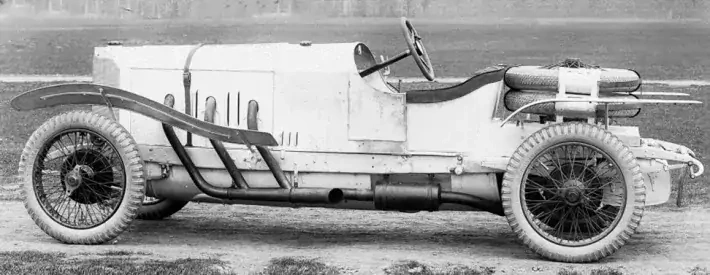Drumming up business

The future of braking may lie 120 years in the past
Early cars were developed to go before they could stop, as Karl Benz proved during history’s first and possibly shortest test drive, when he drove his newly built Motorwagen into the workshop brick wall.
Hastily repurposed ideas from horse drawn carriages, using wooden blocks and levers (spoon brakes) were quickly found to be an ineffective stopping solution when used with Michelin’s ground-breaking rubber tyre technology.
As motorised cars became faster, the humble handbrake developed by Wilhelm Maybach in 1901 for the Mercedes 35HP rapidly became mainstream. The idea was simple; a mechanical drum with steel cables wrapped around the drums of the rear wheels, operated by a hand lever. A concept further developed and patented in 1902 by Louis Renault. Renault is another pioneer of the automobile industry, and it’s his design that is considered by many to be the foundation of modern braking.
With hydraulics not playing their part in braking for some time, the handbrake came before the foot brake. Feet didn’t play a major part in the operation of the first cars, engines pretty much ran flat out and either engaged with a drive or not. Steering was still a rudimentary affair meaning that out of the origins of the first cars, the drum brake is one of the few legacies that have appeared consistently through the evolution of the automobile.
Early drum brakes were hazardous because of the asbestos used as a friction material and required a lot of manual adjustment to compensate for the thinning shoe material as the brakes wore down. The advantages of keeping road detritus and water out, alongside with the difficulty of using a disc to hold a parked car has meant that drum brakes are still a common sight in the modern workshop, for heavier cars they are often hidden in the hat of disc brake such is the attractiveness of this proven method of holding a stationary vehicle, especially if applied when the friction material is hot and can shrink as it cools, possibly reducing the braking effectiveness.
A place in the future
Drum brakes are very cost effective to produce and can need little maintenance. As uptake of hybrid and full battery electric vehicles increases, methods to reduce the sticker price to the motorist are explored. A front axle handbrake may make something of a renaissance for affordable electrified vehicles.
Unlike the previous mechanical offerings (the 2CV springs to mind) the future of front axle handbrakes will be electric. Electric handbrakes offer greater design agility in cabin by removing the mechanical lever. Front electric handbrakes will allow the rear axle to take advantage of a drum brake, as friction braking takes a back seat in stopping the vehicle.
High voltage vehicle regenerative braking does not use the friction material, it’s an energy efficient strategy to recover energy to feed back into the battery and improve range. Sparing friction braking systems from the daily grind reduces wear and tear, but can subject them to corrosion, meaning the rear axle solution of a drum is an attractive option again. Corrosion is often the root cause for the premature replacement of friction components as they cause squealing, a problem that has no engine noise to mask it.
What do I do with my feet?
As braking systems become more sophisticated, fewer foot pedals could be needed. The Nissan Leaf “E-pedal” performs the function of both acceleration and stopping and as new advanced driver assistance systems are developed will that remaining pedal also disappear from the footwell?
Whether the future holds footloose cars or not may become, the humble drum brake could still provide dependable fancy free braking in a new age of mobility, 120 years after it was first introduced.




